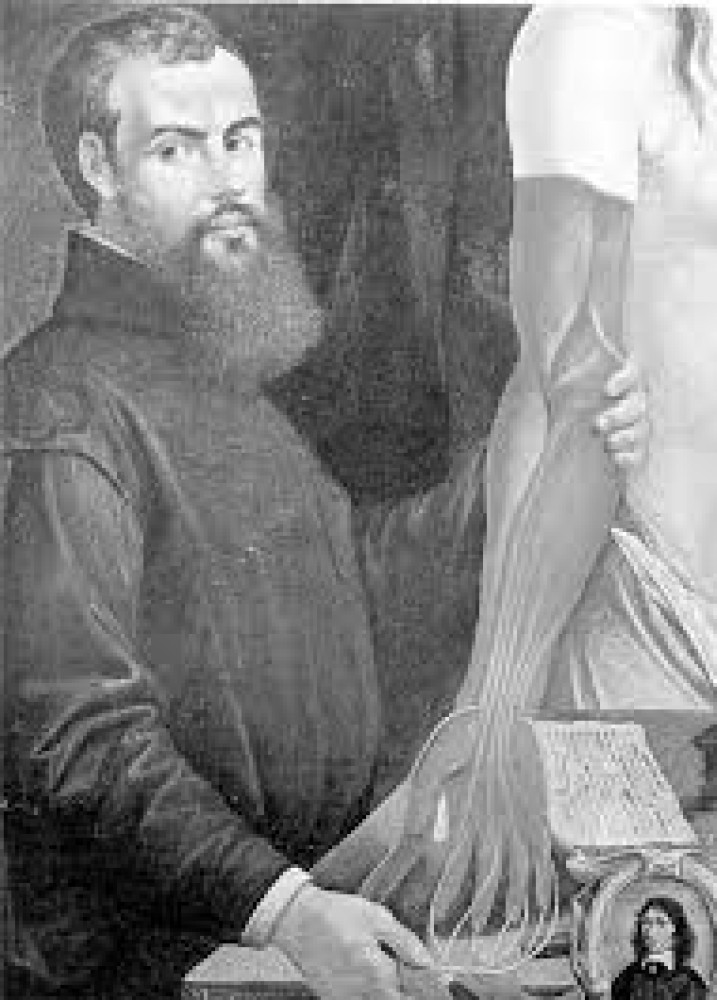
Andreas Vesal was born in Brussels on 30 April 1513 or 31 December 1514. He studied at the University of Louvain and then in Montpellier and Paris. He showed a particular aptitude for anatomy by studying the science of human cadavers; at the age of only 20 he joined Charles V's army as a medical surgeon. After the end of the war he went to Venice and was appointed professor of anatomy at the University of Padova in 1537.
He became sought after in other universities for his specialty and for his great work. He acquired the reputation and title of 'Father and Reformer of Anatomy'. A warrior of superstitions, he could not escape the severe and envious judgments of some of the followers of Galinus, whom Vesalius proved to have erred in anatomical science, and of his Catholic enemies, who called him the Luther of Anatomy.
At the invitation of the Emperor Charles V he went to Madrid, and thence to Venice, as professor of anatomy and surgery in the University there.
Many reasons are given for his departure to Jerusalem:
- That he was ill and had ordered to visit the Holy Sepulchre.
- That he was separated from his wife,
- That he wanted to avoid the intrigues of his colleagues,
- That he finally went to purge himself of the sin of dissecting the body of a Spanish eupatrice, which was considered dead while the heart was still beating, and that because he was sentenced to death by the Holy Inquisition, he received a mitigation of the sentence from Philip II, who imposed a pilgrimage to the Holy Sepulchre.
After leaving Venice, he went to Cyprus and then to Jerusalem, and after returning in the autumn of 1564, he was shipwrecked between the Peloponnese and Zakynthos and, almost half-dead, washed up on the shores of Zakynthos, where he died in October 1564. For the place of his burial others say that he was buried in the Catholic church of Santa Maria in the then Aigialos, as the town of Zakynthos was then called.Extensive research in local sources by the pharmacist Nikolaos Varvianis presented important evidence which determined the location of the shipwreck in the location Kalogerata of Laganas Bay of Zakynthos, below the old Monastery of the Franciscan Fathers of St. Theodore.
A commemorative column was placed there.
